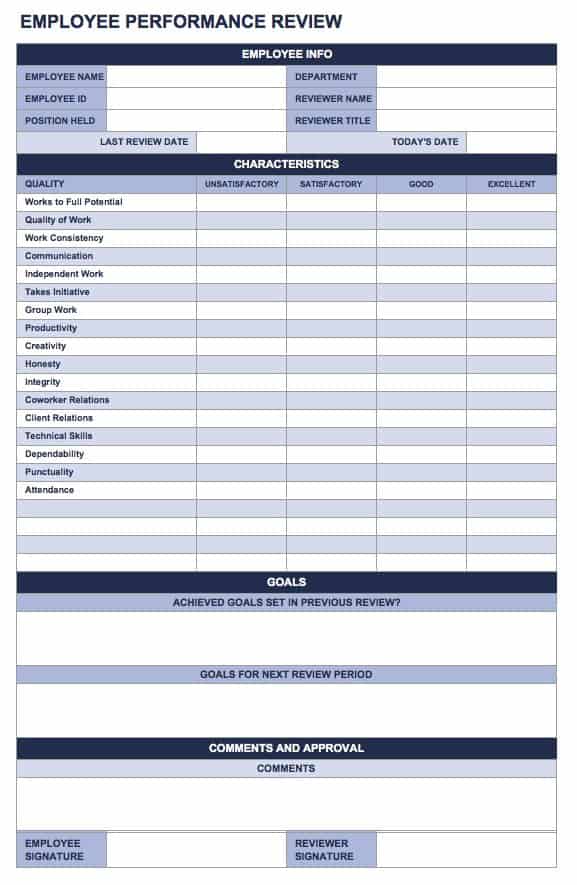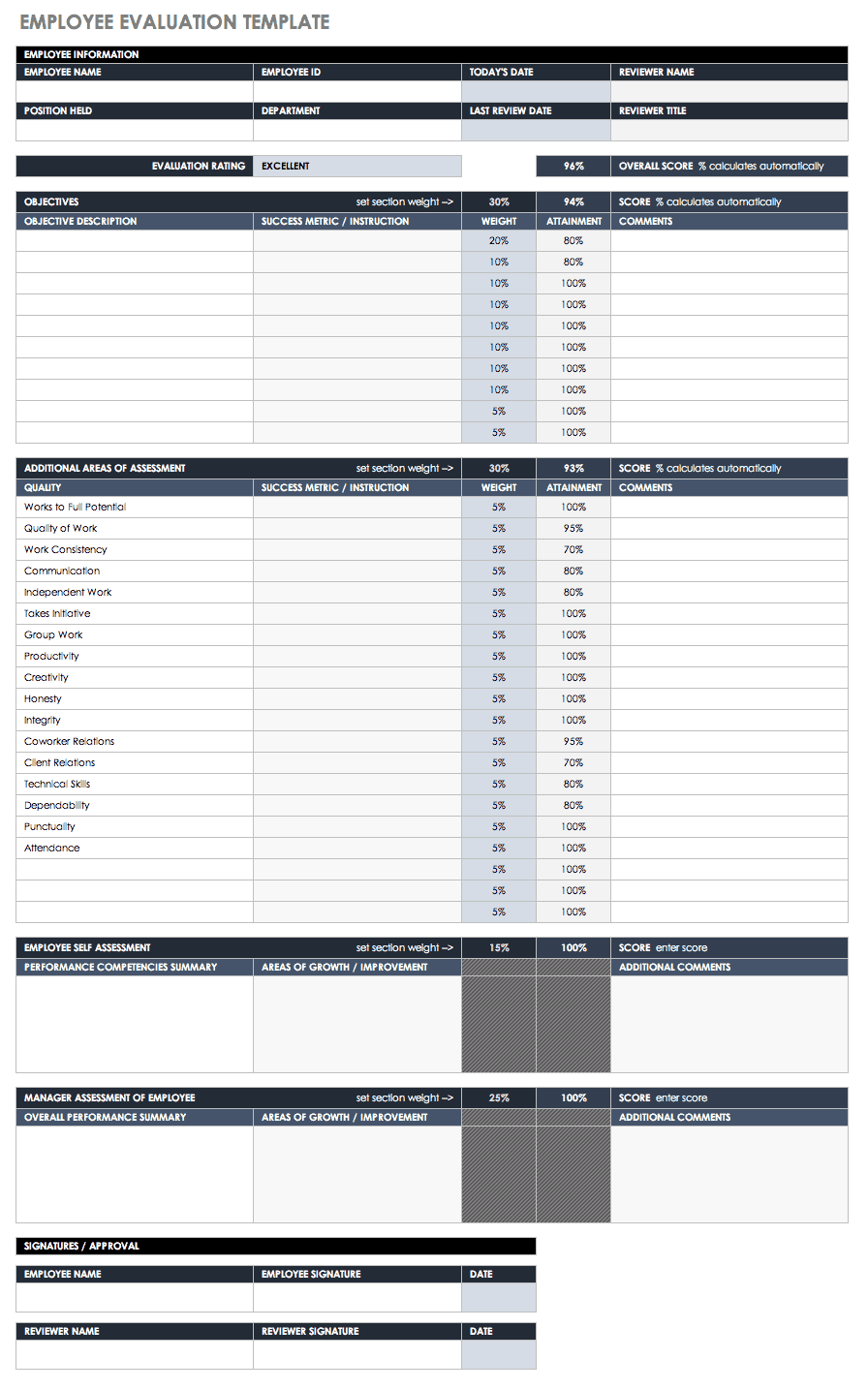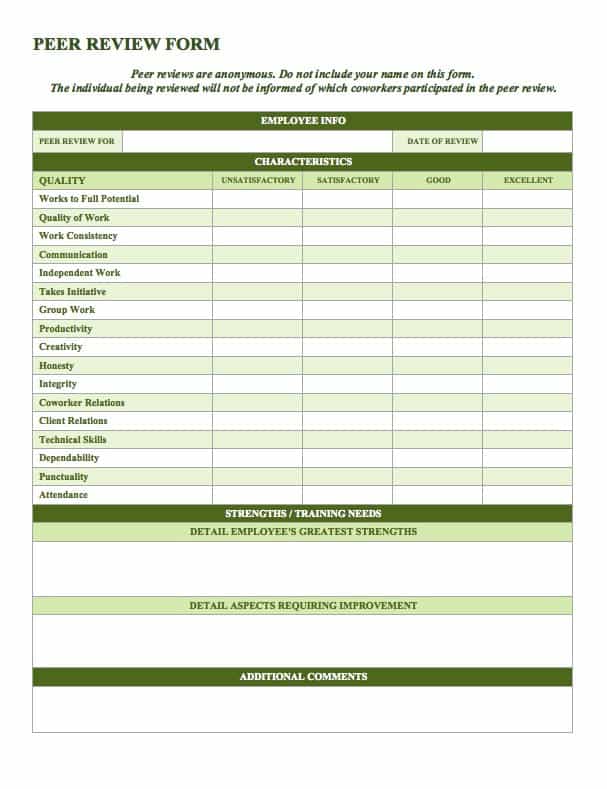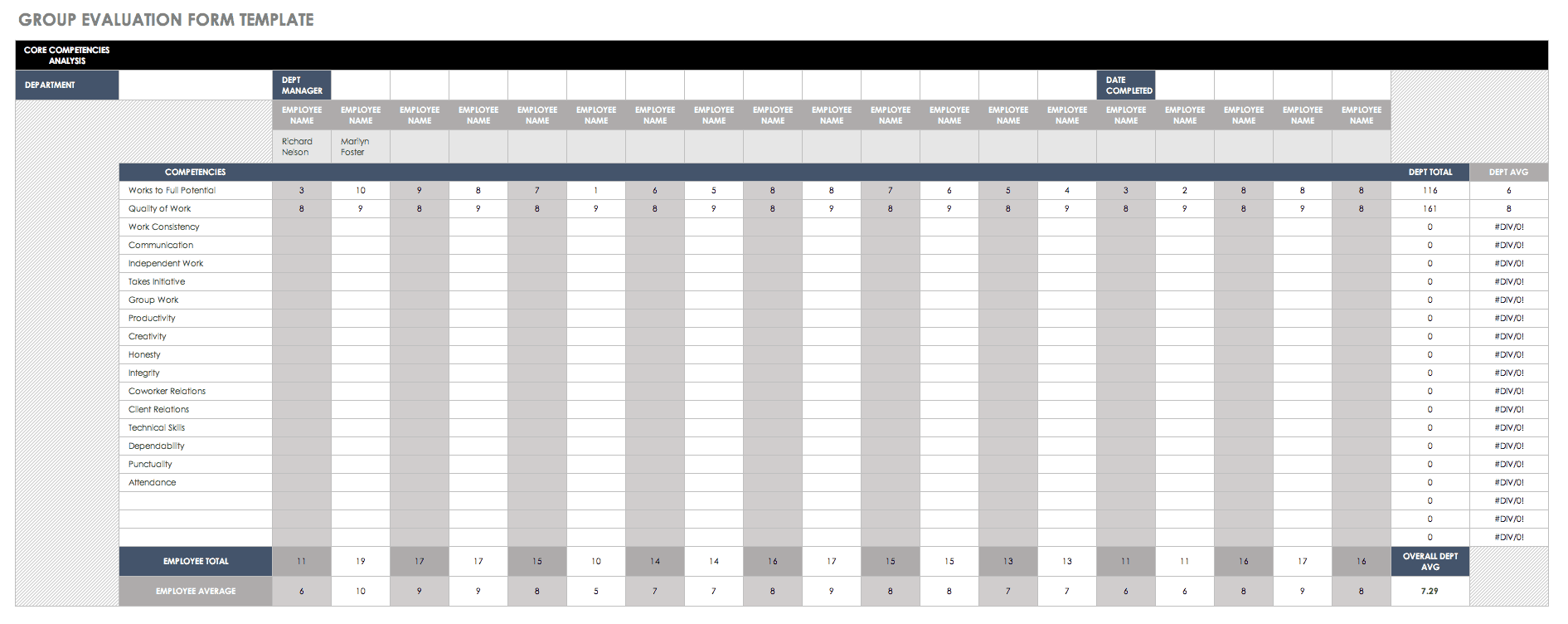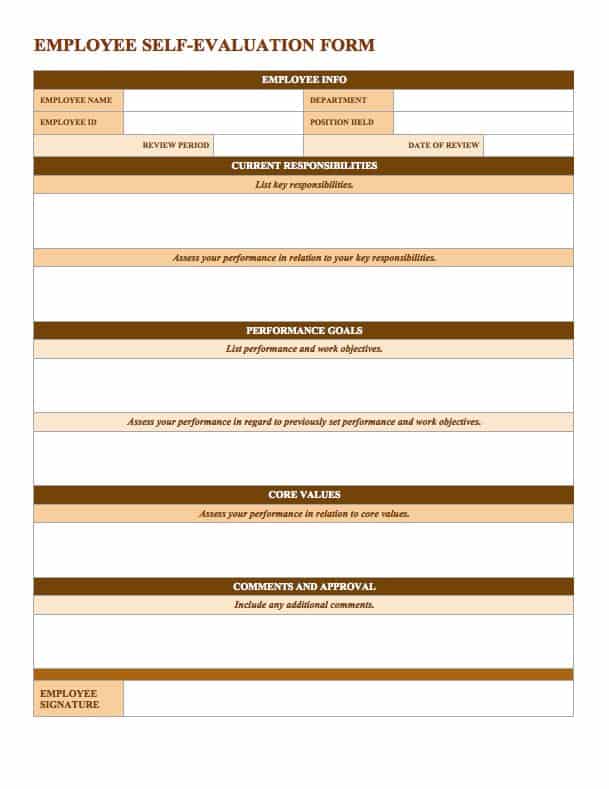What Is a Performance Review?
Managers in organizations of all sizes conduct performance reviews with employees to benefit the company, supervisor, and individual team members.
The frequency of reviews can vary from firm to firm. “Although the most effective managers review the performance of their employees and provide feedback on a continual basis, the use of performance reviews helps ensure that review and feedback will occur at least once or twice per year on a formal basis and will be conducted consistently across managers,” adds Pollack.
Project Management Guide
Your one-stop shop for everything project management

Ready to get more out of your project management efforts? Visit our comprehensive project management guide for tips, best practices, and free resources to manage your work more effectively.
Purpose and Benefits of Performance Reviews
While both managers and employees might view performance reviews with apprehension, the exercise is useful for everyone on the team. Reviews can motivate employees to improve productivity through careful communication and guidance. The information collected from employee self-appraisals, peer feedback, and ongoing monitoring of achievement and challenges can help managers see where improvements need to be made and potential steps to take to bring those changes to fruition. Cumulative intelligence from multiple team members can provide comprehensive data that can positively impact performance management and operational design. Performance reviews can also furnish a standardized way to make comparisons among employees for salary or promotional-based decisions.
Performance Review Pointers: Avoid the Stress
Accurate preparation can lower the stress of writing or receiving performance reviews, as can participating in thorough manager training.
"Performance appraising should not be done casually. It is imperative that the rater is trained on how to appraise correctly so to avoid potential rater errors. Frequent errors include, for example, the halo effect, or the tendency to make inappropriate generalizations from one aspect of a person’s job performance. Others are leniency, the tendency to evaluate all people as outstanding and to give inflated ratings rather than accurate assessments of performance, and central tendency, which assess every person as average regardless of differences in performance, among other rater errors.
"There is an assumption that the employee is being evaluated on what you hired them to do per the job description. Yet, this is not always the case. Most jobs are broken out between: must do/know, need to do/know, and nice to do/know. Sometimes raters overly focus on how well the employee is doing in the nice to do/know and overlook that the employee might be marginal in the must or need to do/know,” explains Kopp.
He continues to stress the importance of having the proper training before conducting performance reviews. “When done correctly, performance appraising does take time and training to be effective; in fact, to circumvent this may be at the organization’s peril. An important feature of a performance appraisal system is that it may help avoid the phenomenon of the Peter Principle; that is, having employees who get promoted to their level of incompetence. Effective performance appraisal systems ensure that employees develop their skill sets,” Kopp adds.
Performance Review Pointers to Consider
There are many aspects to performance reviews to keep in mind. Here are some pointers from our experts:
- Be Prepared: All of our experts noted that preparation is the most crucial aspect of performance reviews. Training and professional development designed to help managers make the most of performance reviews will make the process go more smoothly. Training will help you learn phrases to avoid when doing an employee performance evaluation, and prevent potential legal issues. Routinely, take notes in performance logs to make employee reviews less time consuming, note issues and achievements, and take time to record the intangible traits (see the behaviors noted below).
Smartsheet offers many free templates to assist you in all types of human resources tasks, including performance reviews. Tools like the following Employee Objectives and Performance Review template are included throughout this article for you to download:
Employee Objectives and Performance Review
This fully customizable template is an all-in-one solution that enables preparation and supports collaboration. Record objectives, see how performance compares to goals, provide feedback, and share with stakeholders in real time. The template also offers best practice guidelines, instructions for every processing element, sample information, and more.
Download Employee Objectives and Performance Review Template
- Be Positive: A negative approach creates resistance. Whenever possible, turn negatives into positives. If corrections are necessary, alternate positive and negative feedback. In written and in-person reviews, reinforce company performance standards, emphasize potential, and develop an individual improvement plan.
- Emphasize Behavior Related to Core Competencies: Depending on the level of responsibility an employee holds, core competency mastery will naturally vary. Use these behaviors to evaluate and apply metrics/ratings to a performance review for an employee:
- Communication: Plans and delivers spoken and written communications clearly, and understands when and how to pass information to appropriate individuals or teams.
- Thinking: Sources information, applies analytical thinking, and thinks conceptually and strategically.
- Interpersonal Relations: Demonstrates interpersonal awareness, teamwork, and cooperation.
- Customer Service: Demonstrates the ability to satisfy internal and external customers.
- Adaptability: Gathers relevant information and applies critical thinking to address multiple demands and competing priorities in an evolving environment, and changes planned work as needed.
- Accountability: Accepts responsibility for their own actions and decisions, and accomplishes work in an efficient, cost-effective, ethical manner.
- Occupational Knowledge: Demonstrates proficiency required in their field and position. Committed to continuous improvement, including learning appropriate technologies.
- Be a Coach and Mentor:
You and your organization should have a goal to help employees reach their peak performance. “In ‘CYA’ (cover your ass) HR and places obsessed with accountability (or the illusion thereof), they are the easiest way to justify decisions like raises, promotions, and terminations,” says Davis. “Optimally, performance reviews serve to confirm that people are getting done both what they want to accomplish and what they are paid to accomplish. Also, they offer opportunities for people to deepen their understanding of their work, how they can do it better, and how they can make more meaningful contributions (and thus improve and grow both personally and professionally).” - Work Outside the Usual HR Box: If you are a manager in a large enterprise and want to go beyond annual performance reviews, Agile Performance Management (APM) can provide a solution to offer ongoing feedback and development for team members, and can be particularly useful for knowledge-related workers. APM uses the principles of Agile software development to drive employee performance, engagement, and business value. Agile is a responsive method that embraces short cycles, regular reflection, and course correction based on collected evidence.
- Take Advantage of Technology: APM requires the use of technology for information sharing and progress reviews, but it is just one way that human resources managers can use technology. They can also use tools like social media for peer reviews and communication, native mobile apps to track progress and solicit feedback, and software programs to check performance metrics against standards. Using web forms can help support your performance review process and offer an easy way for team members to write their self-assessments and provide up-level feedback from employees to management. For more ideas, read “Monday Mastery: 4 Tips to Improve Your Performance Reviews.”
Performance Review Templates and Frameworks
There is no single framework for performance reviews. In fact, all of the experts we consulted with for this article expressed the importance of doing what works best for your company’s culture and business goals. For example, a small Silicon Valley startup with 20 employees, open architecture, and flat organizational structure may have ongoing check-ins and peer discussions, while a Fortune 500 accounting firm with 50,000 employees may need a more formal structure.
Find more templates to organize employee data in “Free Employee Performance Review Templates.”
Here are some frameworks to consider:
-
Alignment between Performance and Organizational Goals: “Aquinis, Joo, and Gottfredson (2011) provide a comprehensive framework for effective performance reviews,” says Pollack. “In the most impactful performance management systems, employee goals are aligned with those of the organization, employees are evaluated on their most critical job responsibilities, and managers and employees are trained on how to deliver and accept feedback.”
Employee Evaluation Template
Designed for an annual review, this form can be customized for different cadences. The template includes sections for weighted, measurable objectives and evaluations with notes for follow-up tasks. Other areas include employee self-evaluation, employee skills assessment, and the employee’s evaluation of the manager. At the end of the template, there is a dedicated area for professional development suggestions.
Download Employee Evaluation Template
-
Acknowledgement and Support of Achievements: “Organizations that focus on results obtained (i.e., goals) and how those results were obtained (i.e., the competencies needed to carry out the work) tend to have the most effective processes that ultimately lead to improved job performance,” shares Pollack.
-
Ongoing Reviews: “When managers hold regular one-on-one meetings (typically bi-weekly), the performance review process is quite painless,” says Fox. “ In these cases, it becomes more of a target. For example, a team member will know that they have a few months to acquire the skills expected for a promotion. When one-on-ones happen regularly with managers (and are managed effectively), there are very few surprises in the performance review process.”
-
Constructive Feedback and Communication: In her practice, Abudi emphasizes peer reviews and self-appraisals as cornerstones of performance review effectiveness. Below are several templates you can use to provide employees with performance feedback.
-
360 Employee Feedback: “I use 360-degree assessments (gathering feedback from supervisors, direct reports and colleagues) for a number of my clients for a variety of purposes. These tools replace the self-assessment component of a performance review (since the individual is completing an assessment on him/herself as well as being assessed by his/her manager, direct reports, and peers.). 360s are an excellent tool if the organization is prepped to use them.”
360-Degree/Peer Review Template
If you use 360-degree feedback for evaluations, this customizable peer review template makes it easy for team members to note strengths and areas for improvement for team members. Competencies are rated using a number scale to provide a simple, quantitative look at performance. You can edit the template to include the skills that are relevant to your organization and appropriate for co-worker comments.
-
Download Peer Review Template - WORD
Group Evaluation Form
If you need to evaluate a team, department, or other organizational group, this template supports multiple competency ratings, and then automatically calculates totals scores. At a glance, you can identify the strengths and weaknesses of any team. Ratings assigned to individuals can be extracted from other performance reviews or self-evaluation forms.
Download Group Evaluation Template
- Self-Appraisal: “Be honest! This is possible only when there is trust between the employee and the manager who will be reviewing the self-assessment,” says Abudi. “The employee should use the self-assessment to honestly reflect where they are strong and where they need support (training, coaching) from their manager to improve their skills. This self-assessment is also a great tool to showcase work or contributions made by the employee above and beyond the regular day-to-day tasks.”
Self-evaluations are more than a formality — they are meaningful tools. They can be challenging, but self-evaluations provide a chance for team members to evaluate their own job performance and ascertain if their supervisor has the same understanding. They’re an opportunity for employees to own their achievements, explore new opportunities in their current position, and step up their career plan. This customizable self-evaluation form provides an open-ended outline for responsibilities, performance and targeting performance objectives.
Download Employee Self-Evaluation Template
Learn more about self-assessment in “How to Write and Survive Your Self-Assessment and Performance Review.”
-
Rating Scales: According to the Society for Human Resource Management, “Ratings scales are commonly used because they provide quantitative assessments of a team member level of achievement or performance, assist in differentiating between employees and are relatively easy to administer. There’s no consensus on which scale works best, but most share common elements. Rating scales may be numeric (e.g., 3, 4, 5) or alphabetic (e.g., a, b, c), with numbers or letters corresponding to an adjective, such as 5 = excellent or c = satisfactory. Rating scales also may be narrative. For example, one element on a scale may be unacceptable performance, described as fails to meet basic requirements and objectives. Scales that provide a positive message have become more popular. For example, a scale may include ratings such as basic, effective and very effective.”
Introductory Period Performance Review Template with Ratings
This performance review template is designed to be used after the usual 90-day trial period, and features a rating scale for new employees as well as space for goals, feedback, and training requirements. Conducting an introductory review ensures that the employee is suited to his or her position and that adequate support and a clear action plan is in place as the individual grows in their role.
Download Introductory Period Performance Review Template - WORD
-
Review as a Coaching Opportunity: “I have a rather different take on performance reviews in that I recommend focusing on positive behaviors and promoting positive outcomes. Criticism of all kinds can be framed in the form of what should be done and how things could go well,” says Davis. “Telling people what not to do, and/or harping on what they do wrong, is largely a waste of time because it does not provide any means for correcting behaviors (i.e., Don't do X doesn't actually tell you what you should do instead). Another very vital part of criticism is differentiating between the obtained outcome and the desired outcome. Ask employees how they think they can achieve the desired outcome and offer resources and advice when asked — this supports the autonomy of the employee and respects their knowledge and talents. For instance, ‘Your sales for Q1 were $403,917, and we're really hoping for each member of the sales team to break $500K each quarter. Any ideas on how you can reach that goal?’ sure beats saying, ‘’Your sales for Q1 were insufficient. Get them up, or you're fired!’”
Professional Development Plan Template
As a manager, your coaching and support can boost employee satisfaction, retention, and clarify career paths. A professional development plan keeps employees inspired and helps you reach future business goals, too. In this template, goals are separated into specific time frames, along with their purpose, and required action steps. Using this customizable tool in performance reviews keeps you and your team member on track, or provides an opportunity to make adjustments.
Download Professional Development Plan Template - WORD
Useful Phrases/Communication Tips for Performance Reviews
No matter how you approach the performance review structurally, the goal is to use the right words to communicate with minimum friction and maximum effect. Here are some resources for words and phrases to help your with written and verbal appraisals:
- Word Choice Reference for Describing Performance
- Positive Words for Evaluating Employees
- Performance Appraisal Action Verbs
- 240+ Performance Evaluation Phrases
- Performance Appraisals & Phrases for Dummies Cheat Sheet
Need more communications tips? Look into How to Write an Effective Performance Review in the Least Amount of Time Possible: Performance Review Tips, Phrases, and Comments.
Common Performance Review Pitfalls
In addition to preparation, a positive attitude can make the difference between a dynamic or dismal performance review experience. Our experts weigh in on what to avoid:
-
Avoid the ‘Ding’: “Some common pitfalls include focusing only on ineffective performance without acknowledgment of what the employee has done well,” says Pollack. “Another is to base the review on what has occurred most recently. You also need to consider what occurred earlier in the year, factors that are not under the employee’s control or related to their responsibilities, and using the review as an opportunity to ding an employee rather than to provide feedback and improve performance moving forward.”
-
Do Your Legwork and Take the Right Amount of Time: It’s essential to prepare and schedule enough time so the manager and employee can partake in an honest dialogue. Employees should have an adequate amount of time for a self-appraisal, and the manager should collect employee performance data between reviews as well as feedback from co-workers. Allocate ample time so that both parties get the full value of a performance review before and during the meetings, but regular check-ins should be standard. “The outcome of a performance review should never be a surprise to the individual who is being reviewed,” explains Fox. “When managers hold regular one-on-one meetings (preferably bi-weekly), the performance review process is quite painless.”
-
Criticize Behavior, Not the Individual: If correction is necessary, it's crucial to focus on the behavior and not the person, says Davis. “Comments about the nature of the person or their intentions are major faux pas. [It’s] better to say something like, ‘You have been coming in after 9 AM with some frequency, but it's important to be here by 9 AM precisely because our customers start calling right away and they need our help.’ This latter correction focuses on the behavior (coming in late) and does not judge the person (e.g., lazy, careless, etc.). Often, exploring why poor performance is happening can lead to improvements in management, changes in expectations (which often underlie problems), and alternate arrangements that make for better performance.”
Improve Performance Reviews with Smartsheet for Human Resources
Empower your people to go above and beyond with a flexible platform designed to match the needs of your team — and adapt as those needs change.
The Smartsheet platform makes it easy to plan, capture, manage, and report on work from anywhere, helping your team be more effective and get more done. Report on key metrics and get real-time visibility into work as it happens with roll-up reports, dashboards, and automated workflows built to keep your team connected and informed.
When teams have clarity into the work getting done, there’s no telling how much more they can accomplish in the same amount of time. Try Smartsheet for free, today.




